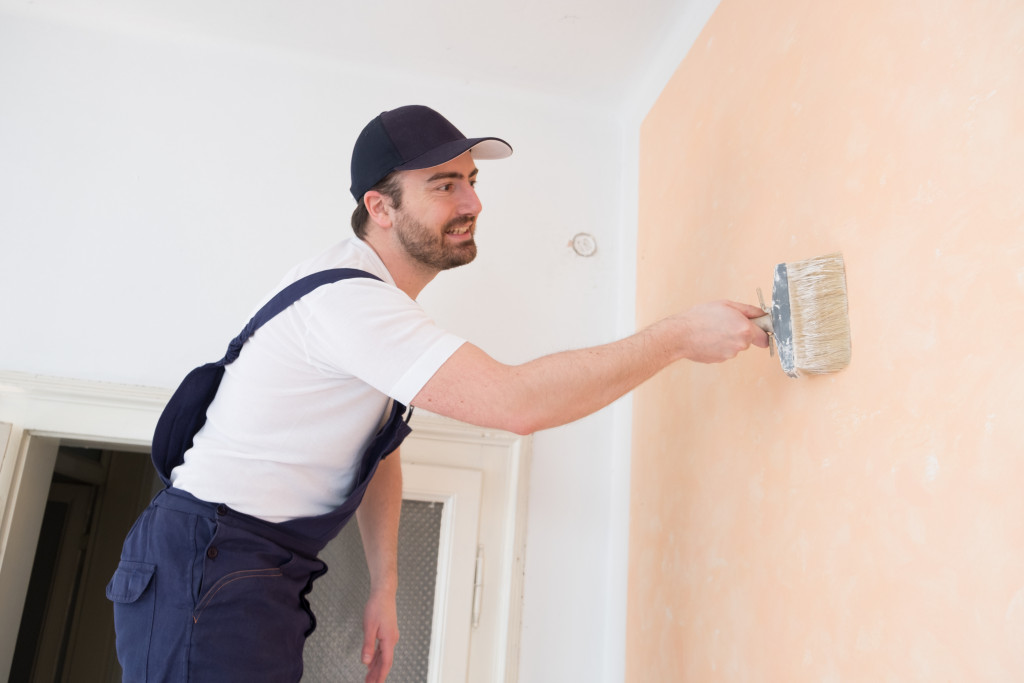Paint is what gives our home life and personality. Applying the right combination of colors can help achieve your desired effect. However, it can be a grueling task. If your home is starting to look a bit dingy, then it might be time for a fresh coat of paint. A new splash of color can breathe new life into any room.
Like most home remodeling projects, painting requires a bit of planning and preparation. It is also important that you adopt a positive mindset so you can finish the job as quickly as possible. While you can always hire exterior painters, a DIY job is more fulfilling and cost-effective.
Painting with the hand tools such as brushes and rollers is physically exhausting, and often takes a long time to finish. You can speed up the process by using a sprayer to coat surfaces with paint. What used to take days can now be done in hours. Brushes can leave behind unsightly strokes and runs while using a sprayer can ensure a smooth and even coat.
One mistake can put the entire project in jeopardy. Here are some of the most common mistakes DIYers often commit when doing a painting job.
1. Ignoring prep work
A lot of rookie projects suffer from a lack of planning before execution. Before applying paint, you need to patch up the holes and fill in the cracks, among other things. Preparing the surface before painting can spell the difference between a shoddy and a sturdy job.
2. Cutting corners
It’s one thing to be frugal, it’s another to be a cheapskate. Quality paint and tools can cost a small fortune, and the temptation to cut corners is often too great. But you are not doing yourself a favor by going for the cheap stuff.
For instance, you’re wasting good name-brand paint if you are using second-rate brushes and rollers. Good tools last forever. If you don’t have any use for them, you can always rent them out or sell them.
3. Skipping the primer
Many DIY painters choose to skip the primer, applying paint directly on the surface instead. Using a primer is essential if you want a smooth finish that will last for a long time. The coat also covers up the flaws on the surface. Some paints already have the primer mixed in, but if you’re using regular standalone paint, you better apply a coat of primer on the surface before painting.
4. Dipping too deep
Many people dip their brushes into the paint can too deep. Not only are you wasting expensive paint, but you are also pushing the hard-to-remove pigment deep into the brush bristles. Dip only a third of the brush into the paint.
5. Working without a pattern
Some people work aimlessly, without any semblance of pattern or structure. That might work well for some, but it will only result in an ugly finish for your walls and surfaces. Break the surface into sections and start from the ceiling, working your way down to the floor. Repeat for every increment.
6. Leaving the can open

Do not get paint directly from the can. Instead, transfer a small amount into a paint tray and replace the lid on the main can. Leaving the can exposed can affect the quality of the finished product. Dirt or other paint could change the color profile. Someone might also trip on the can and spill its contents
7. Take your time
Do not rush to apply the second coat if the first one is still wet. Applying another coat of paint on a surface that hasn’t dried completely is a sure recipe for adhesion failure and visible brush strokes. A few months down the line, all the paint will peel away and you will have to do the job all over again. Be patient and take your time.
A final word
These are just some things you need to remember when doing a paint job. Lastly, don’t forget to clean the surface before painting. You have to make sure there is no dust or moisture trapped in the material before applying the paint. Run a vacuum over the surface to remove all dust.







